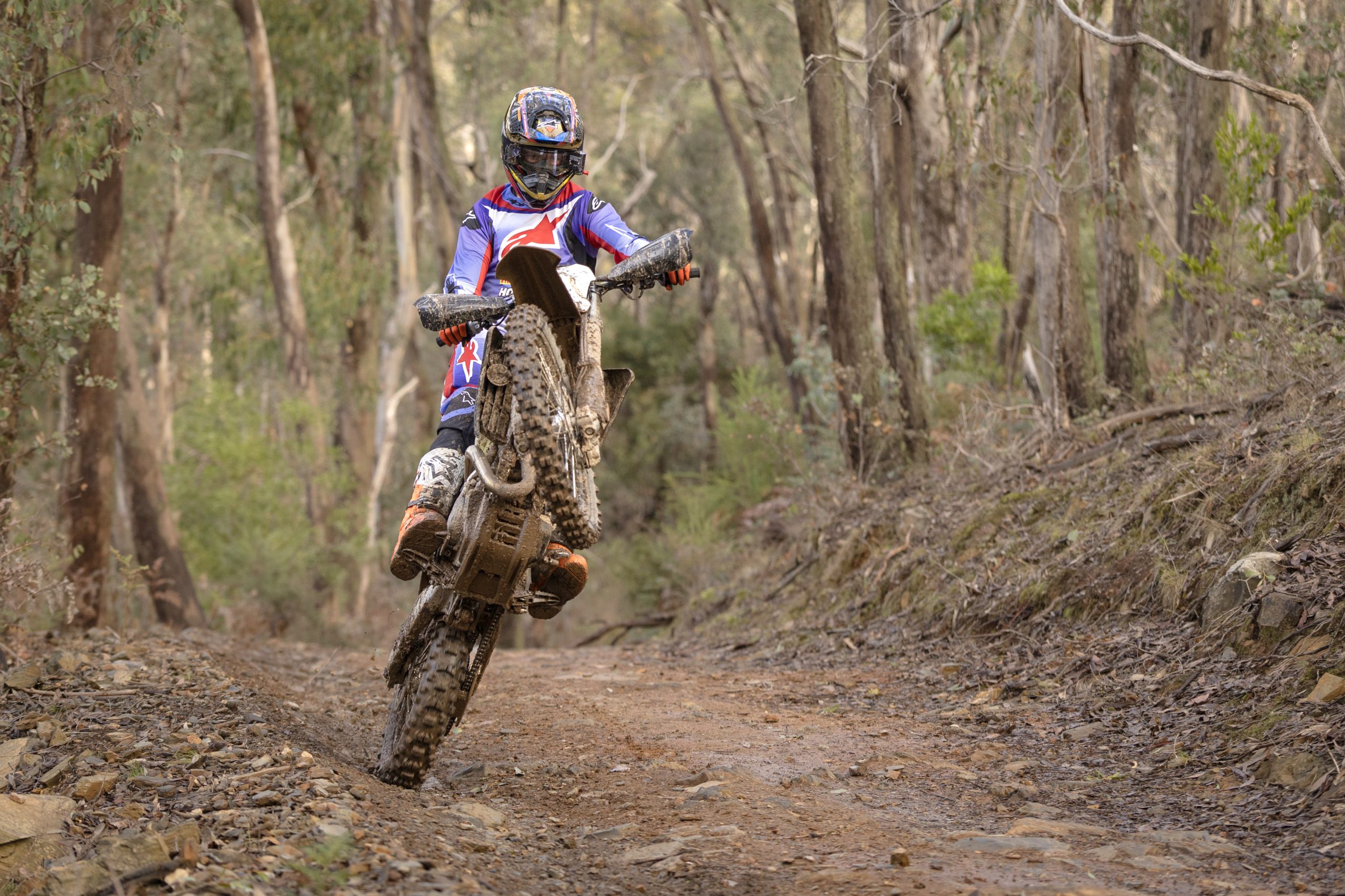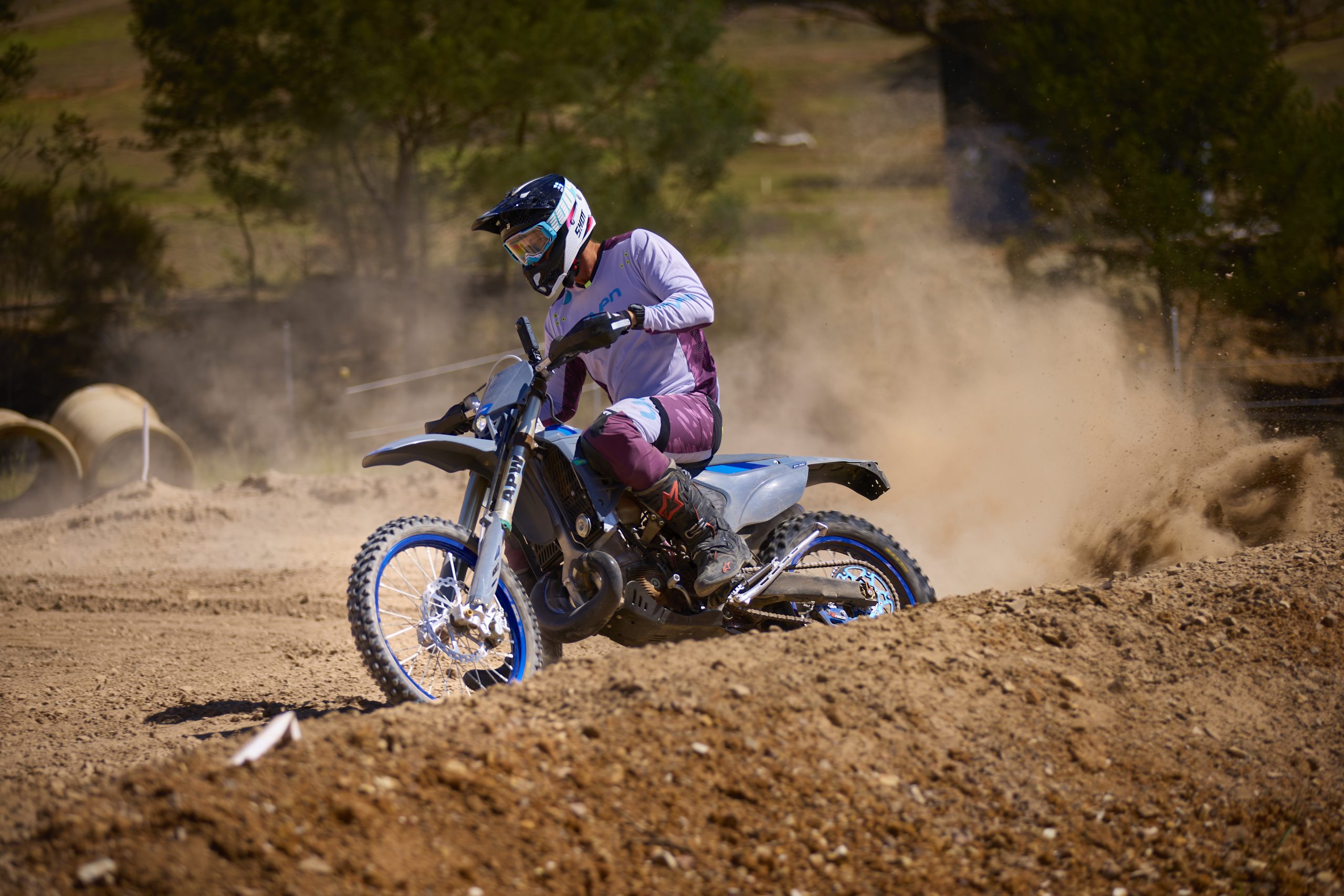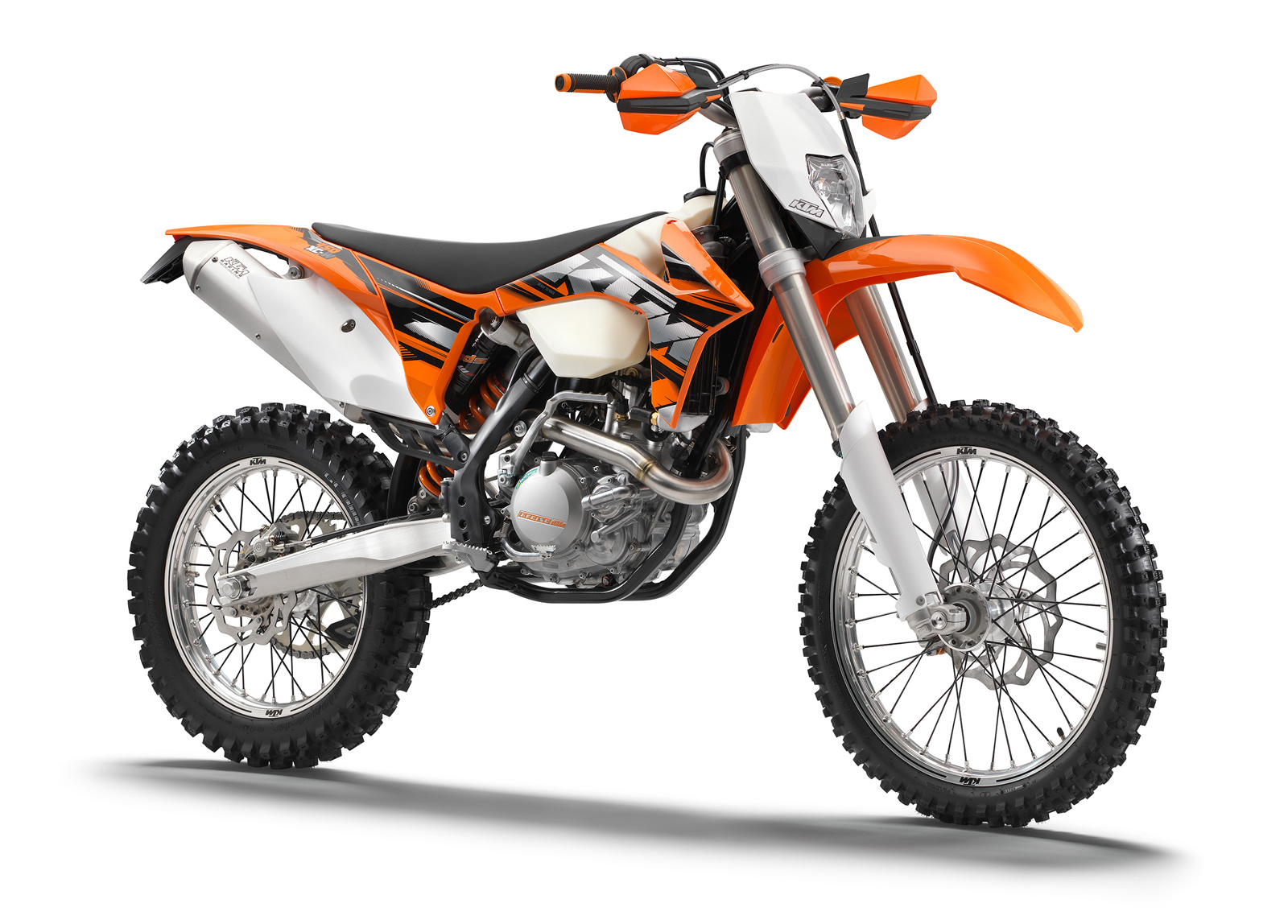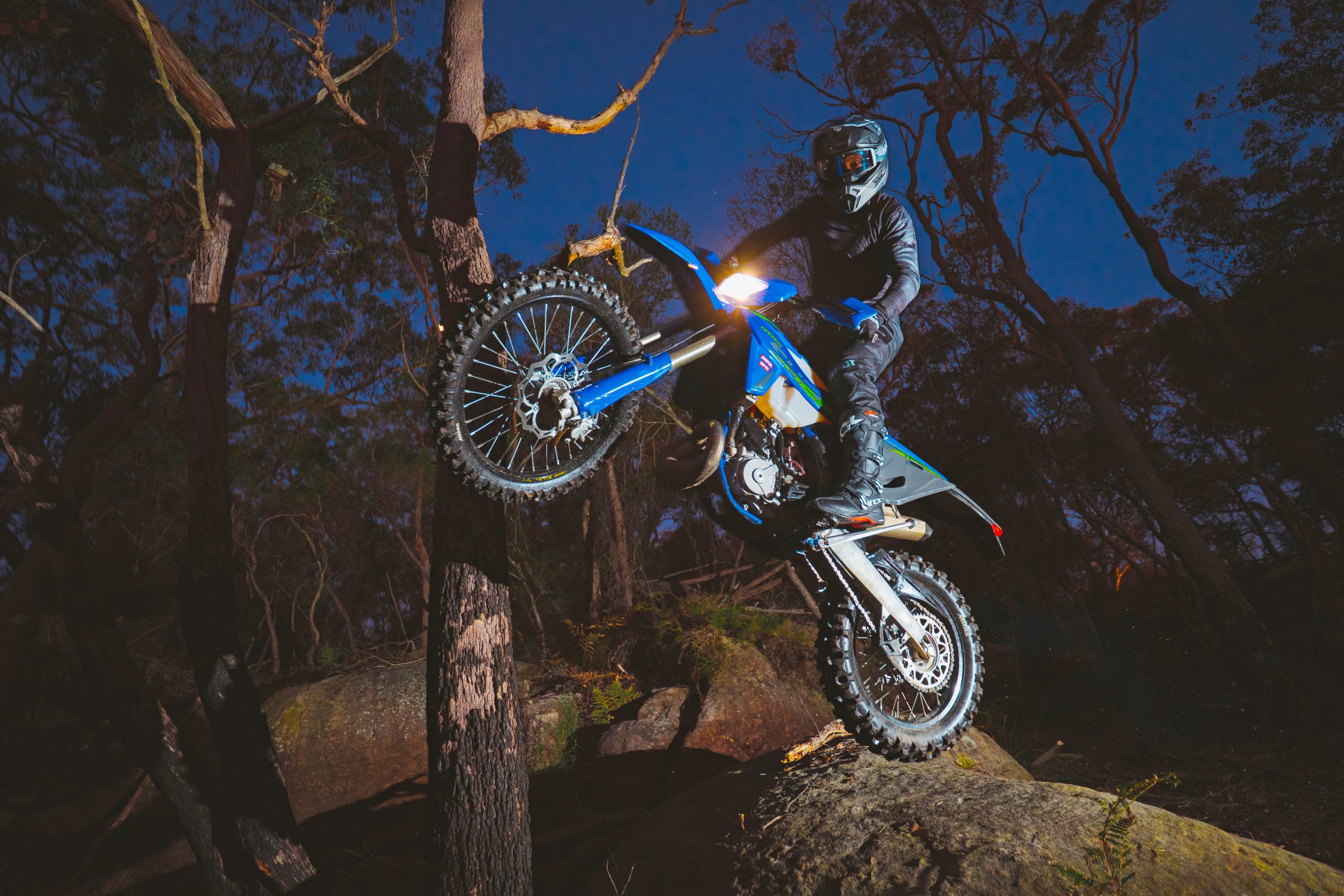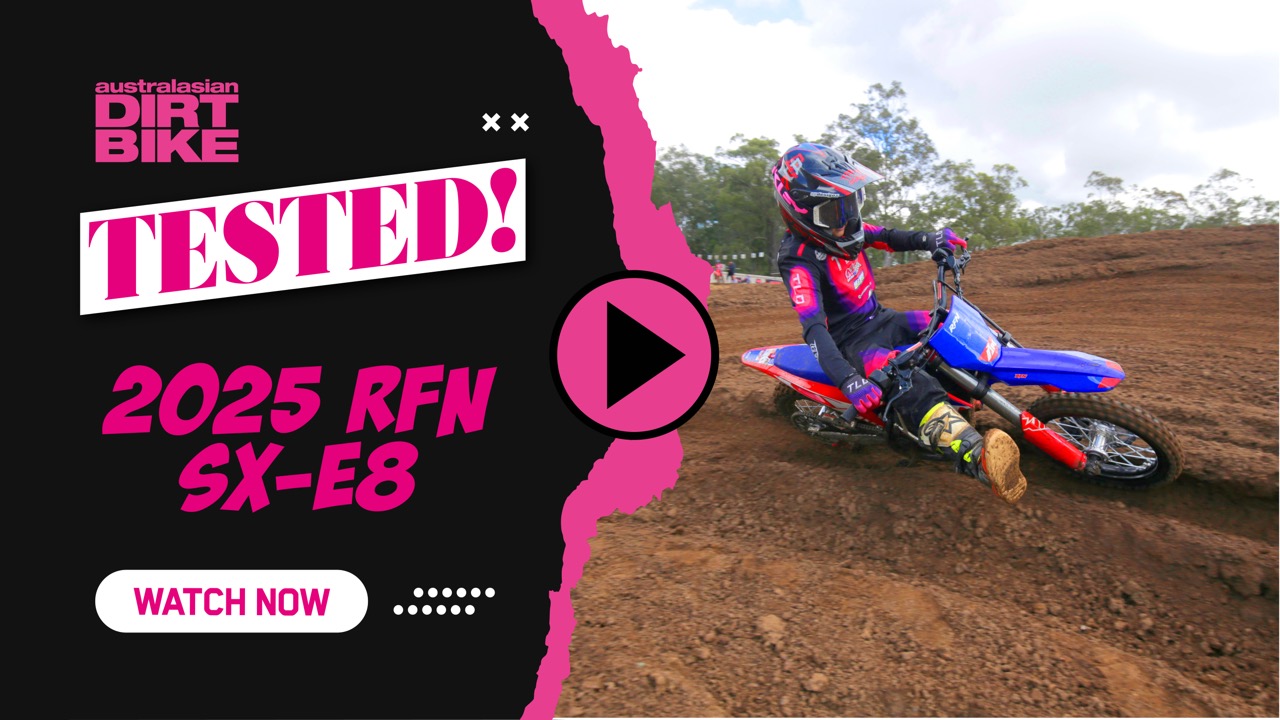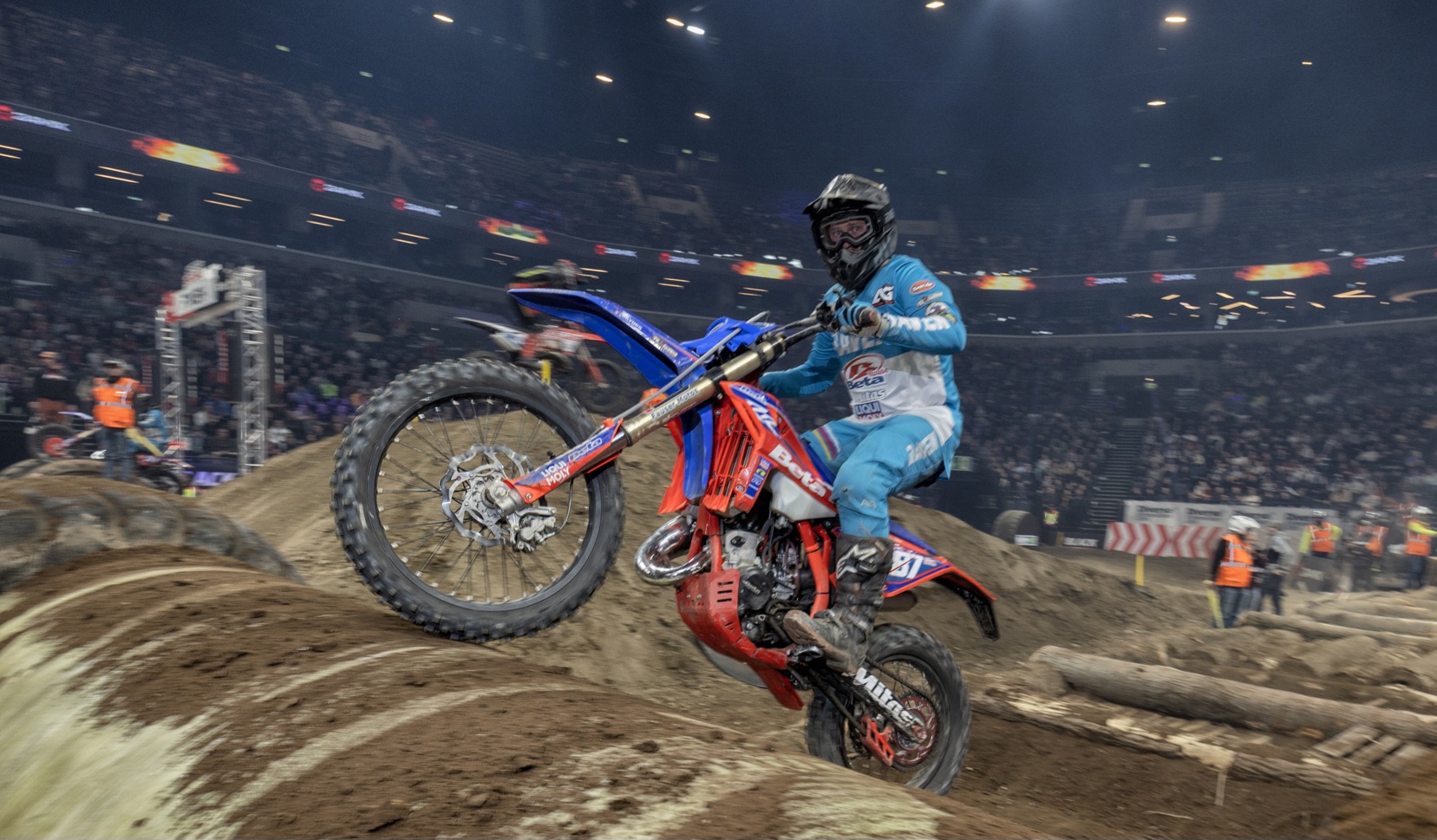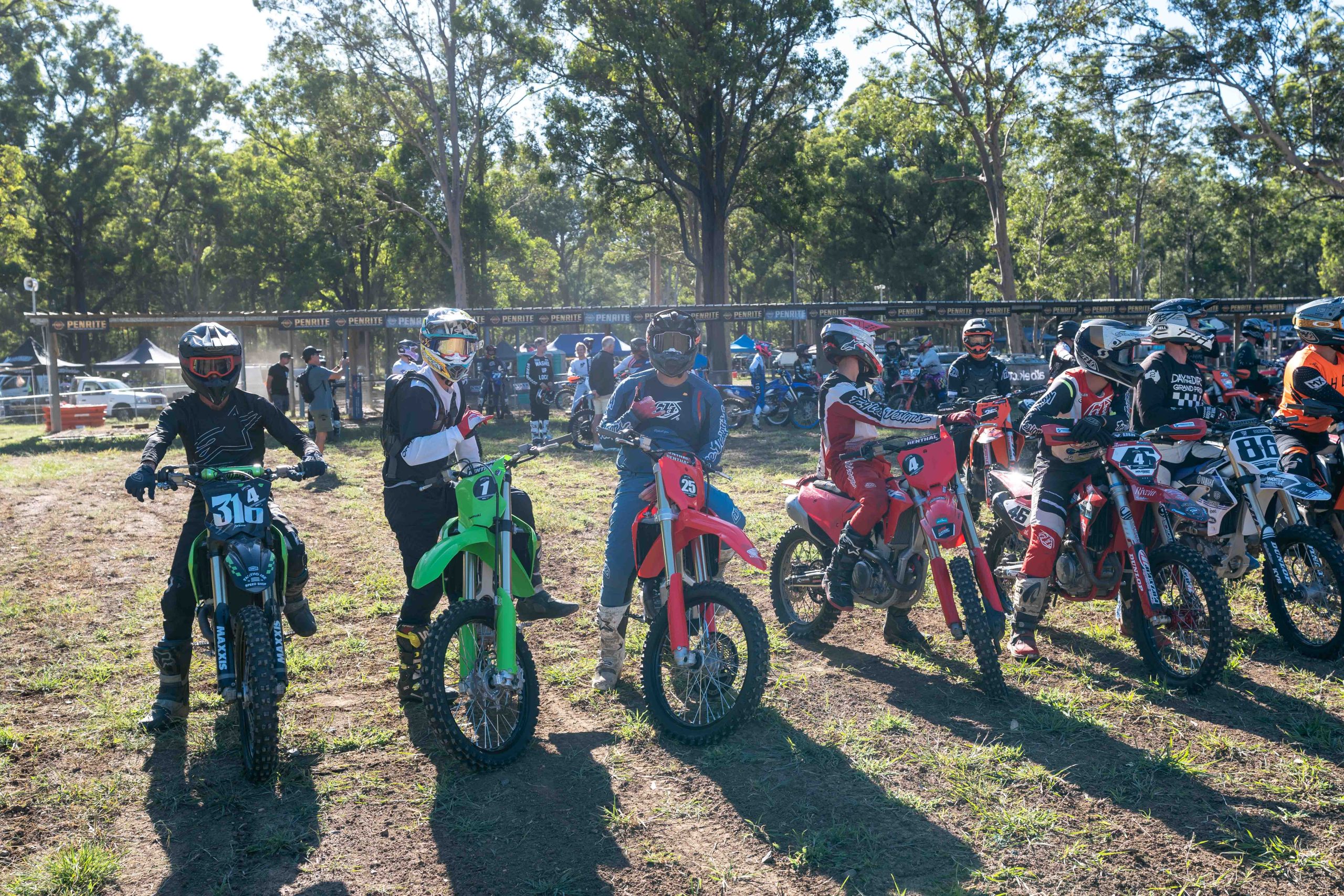Words: Lee Hogan
Photos: Max Peters
QUESTION 1: Does it handle better than the 2017?
Yes! In fact, it doesn’t just handle better, it is dramatically better in the handling department. The aggressive yet stable frame allows the bike to go exactly where you point it.
The new-gen. unit has already proved its worth in the CRF450R and I feel it suits the 250 just as well, if not better, than the 450. The agility of this chassis is most noticeable when jumping and, on the Park4MX circuit, there is lots of good air time to be had by all.
The bike makes scrubbing and seat-bouncing feel like a walk in the park but it also tracks very well when entering rough corners. The bike feels really balanced front to rear and doesn’t seem to dive when hard on the brakes. Overall this is an extremely-good handling machine that is up there with the best.
QUESTION 2: Is the motor an improvement?
While the answer is certainly a yes to this question, you could almost say that the new engine is the opposite of the old one. The 2015/16/17 CRF250R produced good bottom-end power in stock trim with a decent mid-range and then tapered off to an average top-end that seemed to sign off early.
The 2018 does things differently. While the bottom-end power is down a tad compared to the ’17, the mid-range and top-end is massively increased. This motor just keeps revving and for Honda 250 fans who just wished that their bike would keep pulling up top, it is the answer to
your dreams.
This engine is an absolute blast to use and, if you can keep it in the meaty part of the powerband, it is a rocket ship. For lighter riders we found that going up one tooth on the back sprocket seemed to bring the power on a bit earlier and made the motor feel a bit punchier but I would go two to three teeth up for my size.
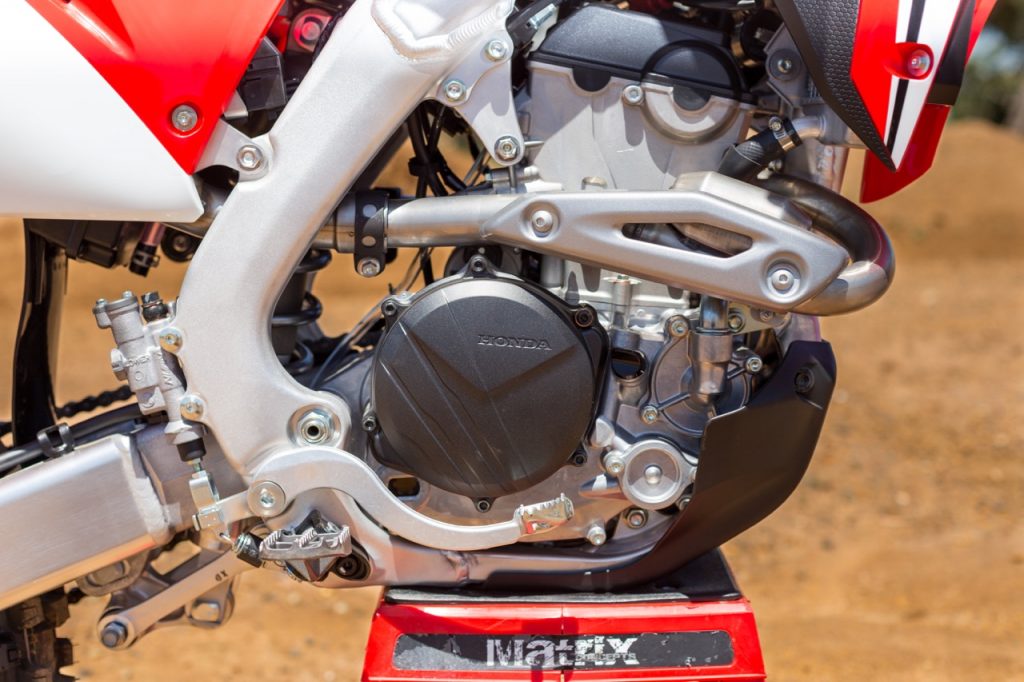
QUESTION 3: Does the new suspension get the tick?
Before I rode the bike I was fairly sure I’d be impressed with the fork but after my warm-up laps and multiple faster sessions I came to the conclusion that the rear suspension is this bike’s shining light. The fork works exceptionally well, it’s just that the shock took anything you could throw at it.
Park4MX was particularly rough on the day that I tested the bike, with over 150 riders there.
The track still had plenty of moisture in it but the braking bumps entering corners were almost at national-championship level.
I was blown away by how well the rear-end tracked into turns. It didn’t squat too much and it certainly didn’t buck under brakes. I settled on 40mm of static sag which gave me 106mm of ride height.
Ideally I’d prefer a slightly higher spring rate, but I still found the standard one to work exceptionally well for me. I was charging jumps as hard as I could and when it came time to wash the bike there were no black rubber marks under the rear guard from bottoming out.
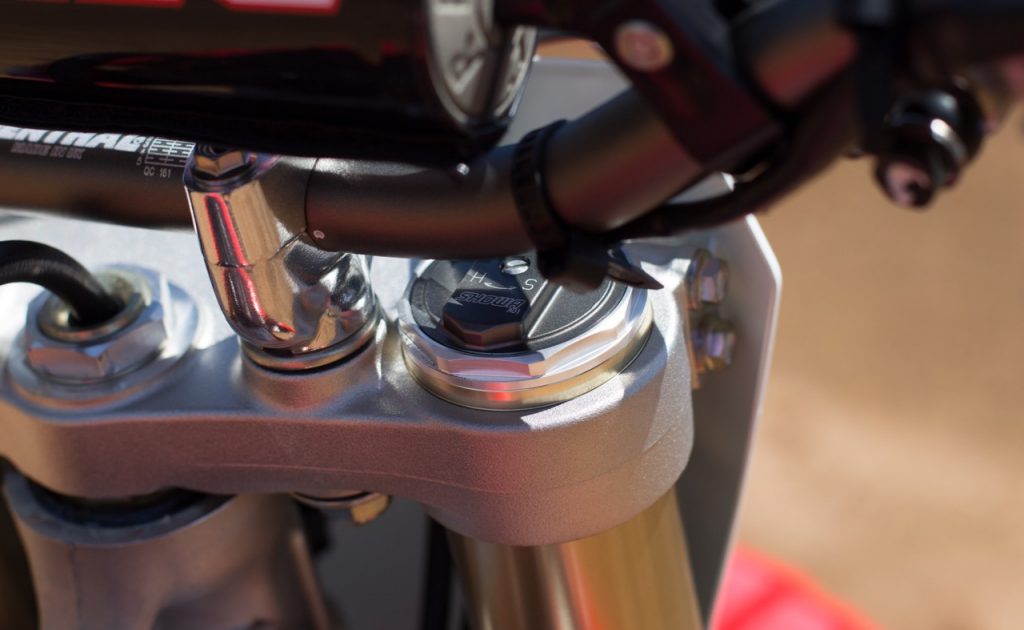
The Showa spring-cartridge fork works a treat. It is stable and really handles chattery bumps a heck of a lot better than the SFF air fork.
It was a little harsh for the first half an hour until it bedded in and, after that, it felt great.
It didn’t matter if I was charging through the bumpy, soft sections of the track or finessing my way through the technical hardpack stuff, the fork did its job really well.
After a couple of hours, the fork was well and truly bed in and it started to feel a bit on the soft side for me but it isn’t really meant to handle spot-on with 86kg in the saddle.
Stiffer springs are needed if you are over 80kg, but the action of this fork, combined with the production valving, is very nice.
And, of course, there’s the bonus on not having to pump up your fork with air every time you have a ride.
The suspension package overall is one of the best getting around in the current crop of 250cc four-strokes.
QUESTION 4: How’s the new electric starter and has it made the air filter difficult to change?
Once upon a time it was only KTM and Husqvarna which could claim outright honors in the electric-start game but now we are seeing more manufacturers joining the fray. Sadly, it isn’t just a matter of bolting on a start button and getting rid of the kickstarter.
There are actually good electric start systems and bad ones. Some require that you put the bike in neutral, pump the throttle twice, twist your wrist about 3mm while waiting for the moons to align, push the start button, cross your fingers and, hopefully, the big girl fires up.
So I was quite intrigued to put Honda’s electric start to the test. Right from the word go, the CRF250R was easy to start. Once the bike had been run-in I did a couple of tests on the track, stalling it in a corner so I could pull the clutch in quickly and see how rapidly it would start. And every time I tried it fired straight away. It didn’t seem to matter if the motor was hot or cold it started fine.
I’d heard rumours that a few people who had purchased 2017 Honda CRF450Rs and had their dealer fit the optional electric start that the air filters were now a nightmare to put in because of the battery taking up space in the airbox.
But when I took the filter out of this bike I had no problem at all. It takes about five seconds to get the filter/cage slotted back into place and the butterfly hut is easily accessible to fasten it.
I actually found it slightly quicker to fit the new CRF250R filter than on the ’17 CRF250R due to the new filter shape and airbox.
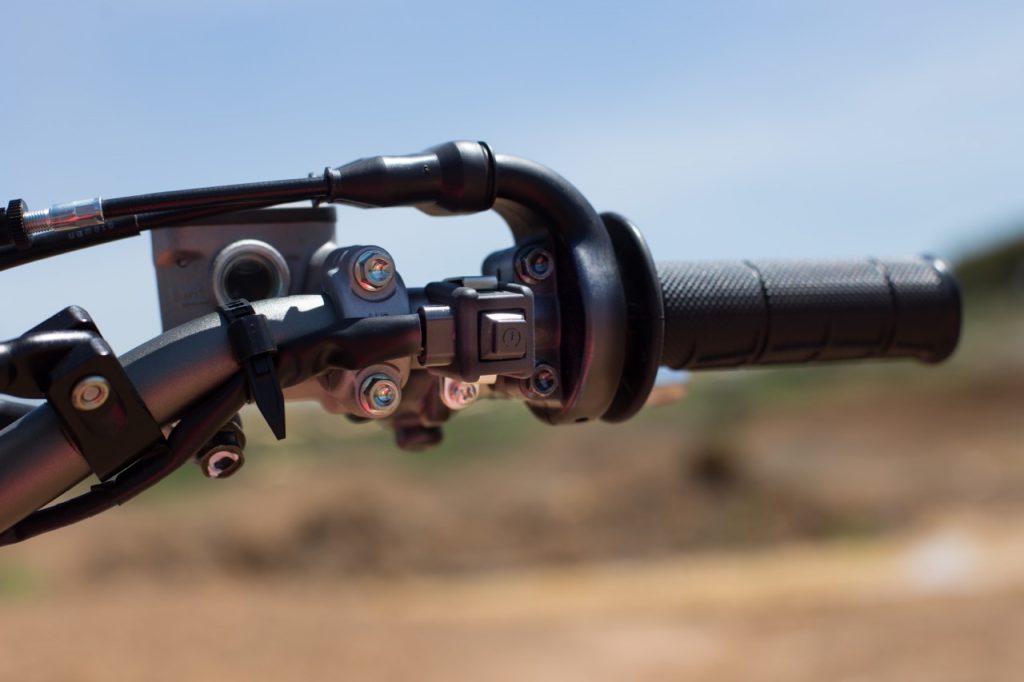
QUESTION FIVE: What tweaks does the bike need?
The first thing I’d do to generate a bit more bottom-end power is go up on the rear sprocket and maybe look at bolting on a set of mufflers. By removing four Phillips-head screws under the sideplates you can remove the black plastic plugs that block the airbox vents in stock trim. The standard CRF craves air and this change dramatically improves the power delivery.
I’d remove the standard handgrips and replace them with my favourite soft compound, half-waffle ’grips. The standard Honda grips seem to be a bit fat compared to most and I notice it straight away when I hop on the production bike.
A set of black rims turn any Honda into a cool-looking machine and, hopefully, it won’t be too long before Honda brings its bikes out with black rims. And maybe even black triple-clamps. Will it make your bike go faster around the track? Hell yes, at least two seconds a lap. Well maybe not, but you’ll look two seconds faster.
Check out the full feature in ADB issue #462 – March 2018
